Artificial Intelligence (AI) in Education : Artificial Intelligence (AI) is changing the way we learn, teach and run education. AI is everywhere from smart teaching and learning systems to automating administrative responsibilities. AI makes education more personal, accessible, and efficient. This post will take a hard look at how AI is assisting education’s evolution in both a positive and negative way, and then assess who benefits most.
What is Generative AI ?
Artificial Intelligence (AI) is a branch of computer science that builds systems that can autonomously perform tasks that normally require human intelligence. These tasks include learning, reasoning, thinking, problem-solving, programming, understanding language, and registering patterns. In other words, it allows computers/machines to think, learn, and decide like humans.
Why AI is Important in Education ?
In the fast-changing-pace of the world we live in today, teacher-directed instruction doesn’t meet the needs of each student. That’s where Artificial Intelligence can make a difference in education. It provides personalized-learning opportunities where content builds on the learner’s progression. Learners are not merely passive players in the learning journey but are empowered to progress at their own speed, understand concepts proficiently, and engage with the relevant topic at hand.
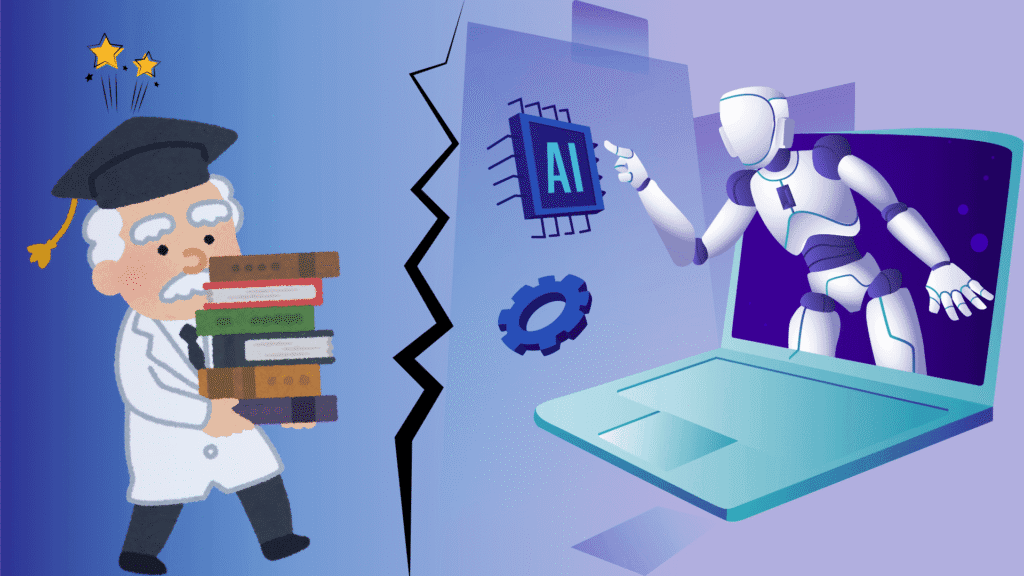
Advantages and Disadvantages of AI in Education
✅ Advantages of AI:
- Creates customized learning paths for students.
- Provides real-time feedback and tracks progress.
- Automates grading and other repetitive tasks.
- Makes learning accessible anytime, anywhere.
❌ Disadvantages of Artificial Intelligence:
- May reduce personal interaction with teachers.
- Over-reliance can weaken problem-solving skills.
- Raises concerns about student data privacy.
- Not everyone has equal access to technology.

How AI Reshapes the Learning Environment
Artificial intelligence (AI) is transforming the education landscape – it has brought to light the priorities of individualised learning, optimising the journey for educational professionals and learner, and teaching skills that can best prepare the learner for the future.
AI has also transformed classrooms into spaces of interaction and digital first. With smart content, virtual tutors, and AI-powered translations, students from incredibly diverse backgrounds can access opportunities for education. Gamified learning, representational learning, and immersion for engaging lessons is made easier with AI and not only appears more engaging but more accessible.
Education has positively embraced the introduction of AI and has begun to chart innovative paths based on the technology to deliver better standards and opportunities for learners and educational professionals. Like all sectors have as a result of utilising Artificial Intelligence, the education system is transforming and revolutionising the ways in which education is delivered.
Increasing the Efficiency of Students
Students are using AI tools to study smarter, not harder. AI tools such as ChatGPT, Grammarly, and AI-based note-takers help students to save time, improve their writing skills, and generate rapid answers to homework questions. Professionals can also use AI to upskill with personalized course recommendations, turning lifelong learning into a part of their daily routine.
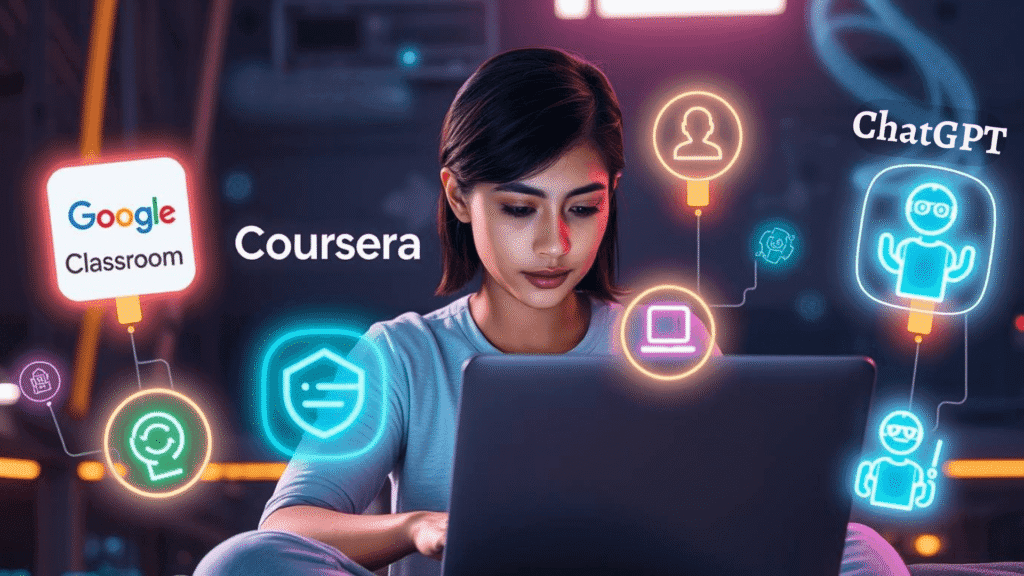
Depending on AI Too Much
AI can be an excellent resource. However, when we rely on AI too heavily, we are containing our critical thinking and problem-solving skills. It’s best to use AI as a learning tool and not a replacement for human intelligence and emotion in education.
How AI Helps Students Save Time
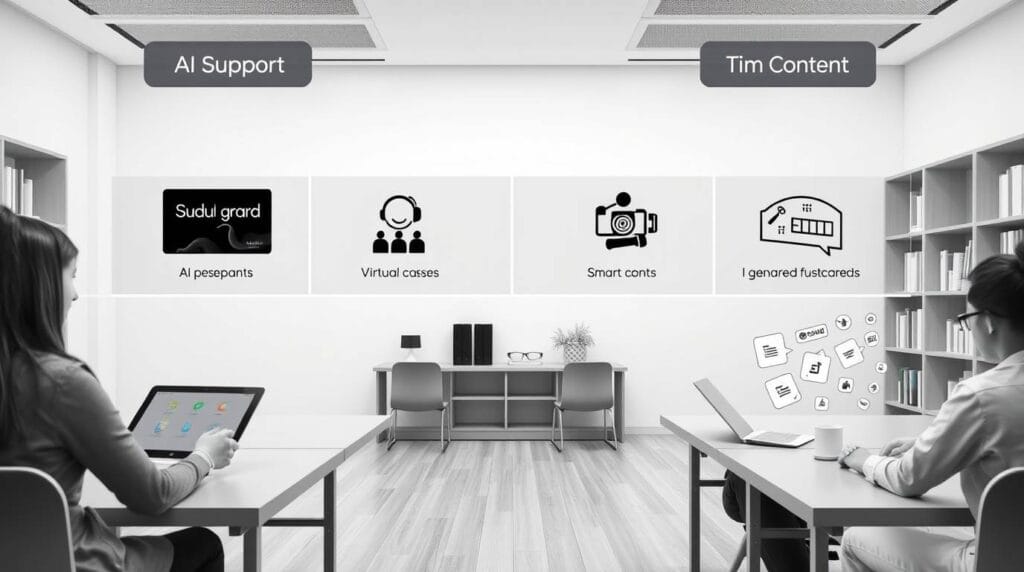
One of the biggest advantages of AI in education is how it saves time for students. Instead of spending hours searching for the right information or waiting for help, students can now learn more efficiently with AI tools. Here’s how:
1. Personalised Learning
AI helps students save time by creating personalized learning paths based on their strengths, weaknesses, and learning pace. Instead of going through generic material, students receive targeted lessons and practice that adapt in real time—helping them grasp concepts faster and avoid unnecessary repetition.
2. Student Support & Accessibility
AI-driven tools like chatbots, voice assistants, and language translation services provide 24/7 support to students. This reduces the time spent waiting for teacher responses or help from peers. For students with disabilities, AI offers real-time captioning, text-to-speech, and other assistive technologies that make learning faster and more accessible.
3. Online & Remote Learning
AI streamlines remote learning through intelligent scheduling, attendance tracking, and automated grading. It enables smooth access to virtual classrooms, reducing time lost in logistical issues. AI also recommends relevant resources instantly, so students don’t spend hours searching for study materials.
4. Smart Content Creation
AI can generate summaries, flashcards, quizzes, and even lecture notes from textbooks or recorded sessions. This helps students review and revise quickly without having to create materials manually. It also transforms long texts into concise formats, allowing quicker understanding and retention.
The Value of AI Today
AI is now a core part of educational tools. Apps like Google Classroom, Coursera, and Duolingo are embedding AI to create smarter learning systems. These platforms use AI to provide progress tracking, course suggestions, and interactive learning experiences.
How AI Helps Parents Support Their Children
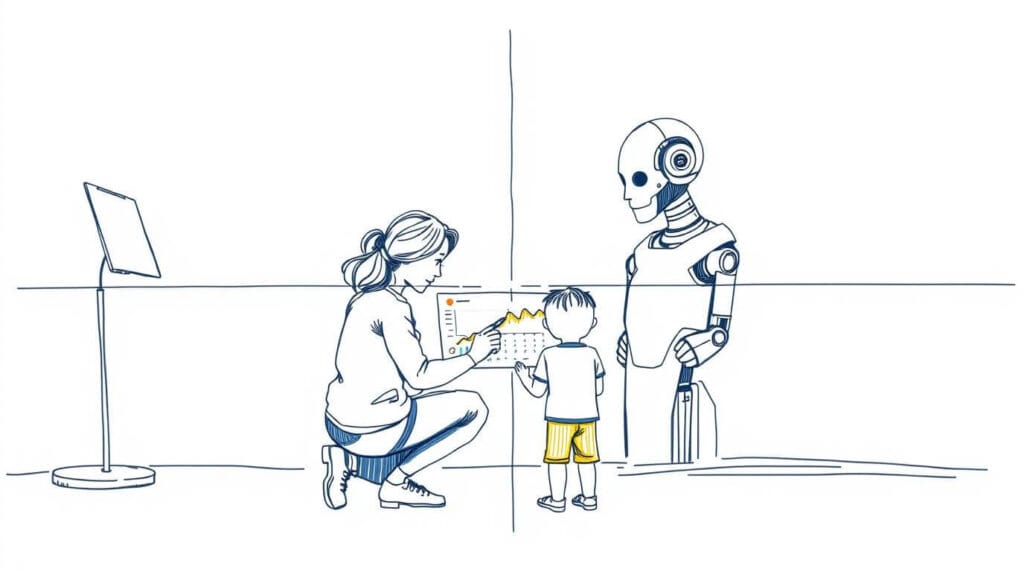
AI enables parents to be actively involved in their child’s education. There are multiple platforms that offer real-time updates on a student’s performance in school as well as attendance and academic deadlines. Parents can receive alerts if their student has difficulty with a topic or redundancy in schoolwork. This provide opportunity for parents to support learning in real-time.
Learning apps with AI integration, give parents additional resources to help their children revise and study at home using quizzes, video lessons, and interactive content. This provides parents with the ability to support their children’s academic journey without having a degree in education.
Who Can Benefit from AI in Education?
AI is not just for students. It helps:
- Students: Get personalized learning and 24/7 help.
- Teachers: Automate tasks and improve teaching strategies.
- Institutions: Manage data and make smart decisions.
- Parents: Monitor student performance and support at home.
- Working professionals: Learn new skills with AI-driven courses.
Top AI Tools in Education
| Tool Name | Link | Popularity | Paid/Free | Purpose/Domain |
|---|---|---|---|---|
| ChatGPT | chat.openai.com | Very High | Free/Premium | Writing, tutoring |
| DeepSeek | chat.deepseek.com | High | Free | Searching,Writing |
| Gemini AI | Google Gemini | High | Free | Searching,Writing |
| Grammarly | grammarly.com | High | Free/Premium | Grammar check |
| Quillbot | quillbot.com | High | Free/Premium | Rewriting text |
| Khan Academy | khanacademy.org | High | Free | School subjects |
| Coursera AI | coursera.org | High | Paid | Courses, certification |
| ScribeSense | scribesense.com | Medium | Paid | Grading automation |
| Brainly AI | brainly.com | High | Free/Premium | Q&A learning help |
| Duolingo AI | duolingo.com | High | Freemium | Language learning |
| Notion AI | notion.so | Medium | Paid | Note-taking & writing |
| Socratic by Google | socratic.org | Medium | Free | Student Q&A support |
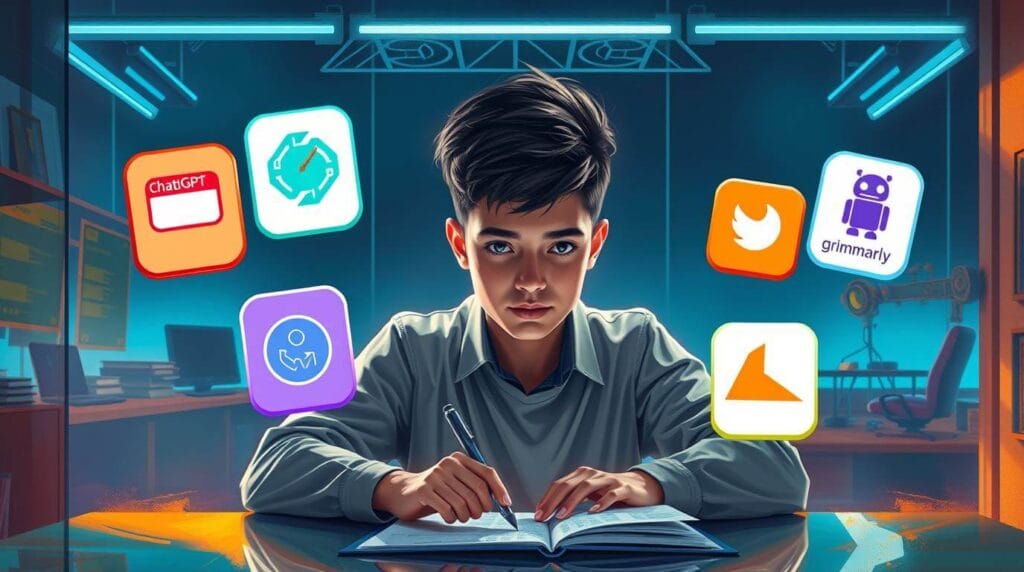
Every Platform Uses AI Now
AI is becoming mainstream. From Netflix recommending educational shows to Microsoft Teams summarizing meetings, AI is helping make platforms smarter and easier to use. Learning platforms now use AI to analyze student behavior, recommend resources, and make learning more effective.
How to Optimize Learning Smartly with AI
Using AI in education is powerful—but only when used mindfully. Here’s how to get the best out of AI without letting it do all the thinking for you:
- Set clear goals: Know what you want to learn and use AI tools to support that path.
- Use AI for guidance, not answers: Ask AI to explain concepts, not just solve problems for you.
- Balance with traditional learning: Combine AI tools with books, human teachers, and peer discussions.
- Be aware of biases: AI can sometimes be wrong. Always double-check important information.
When used this way, AI becomes a valuable study partner that sharpens your thinking rather than replacing it.
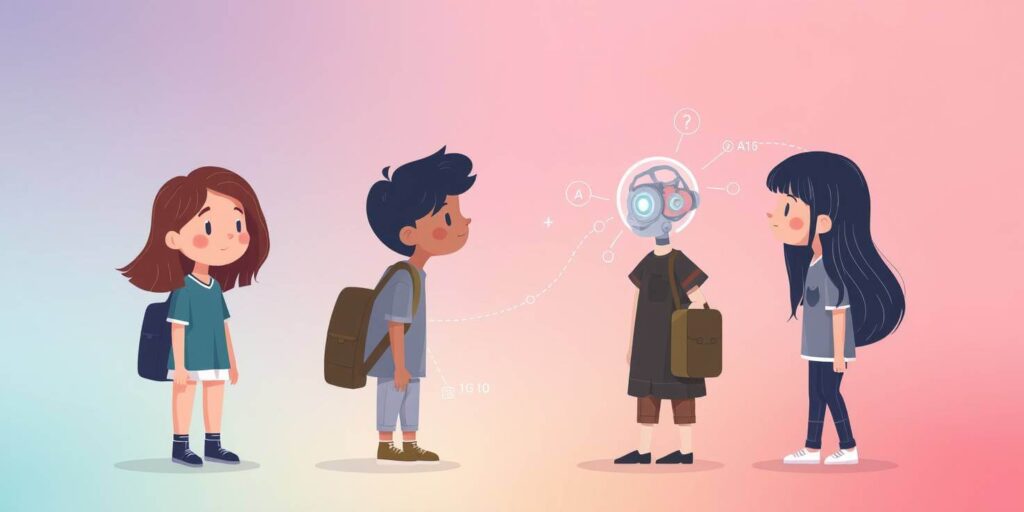
Summary
Artificial Intelligence is revolutionizing education. It personalizes learning, improves efficiency, and automates time-consuming tasks. While it’s important to avoid over-reliance, the benefits of AI in education are clear. Students, teachers, parents, and professionals can all gain from using AI tools responsibly. With the right balance, AI can be a powerful partner in modern learning.
Optimize your learning—use AI smartly, not blindly.










等身 大 ラブドール
ラブドール えろresolving to arrive at the completion ofthis tour about the end of July.I packed up my chemical instruments andthe materials I had collected,